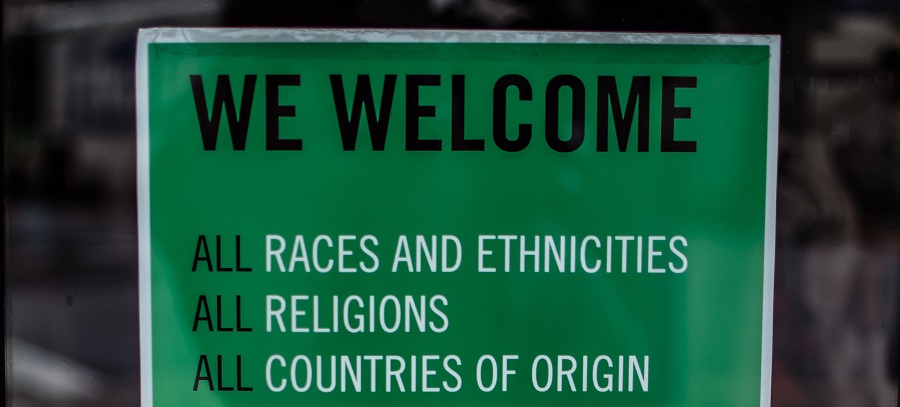How the COVID-19 Outbreak Leaves Refugees Especially Vulnerable
Ways We Can Help Protect Refugees During the Coronavirus Crisis
COVID-19, also known as the coronavirus, has had a drastic impact on our everyday lives and how we are living them. Refugees, already a vulnerable group in society, are especially at risk.
Why Refugees are Particularly Vulnerable
Refugees, especially those in camps, do not have access to many of the precautions we are taking to avoid the spread of the disease. They may not have much access to clean water and the ability to wash their hands multiple times a day. They also do not have the same access to sanitation products we do and are unable to help stop the spread of the disease through those means. Refugee camps are also cramped spaces where quarantining one-self is not an option. COVID-19 can spread quickly among the dense population of camps. They have little to no access to doctors and medication if they experience symptoms or are sick. Underlying health issues which have been untreated or caused by a lack of access to vaccines can make the disease more deadly.
Also, many organizations that have been tasked with helping refugees are seeing volunteer numbers severely decrease. Staff and volunteers may be wary to work due to risk of contracting the disease or may be forced to quarantine themselves to avoid transferring the disease to those to whom they are giving care. Travel restriction will also impact organizations’ ability to access locations and provide services. Global News states that the UNHCR and International Organization for Migration have temporarily suspended their resettlement of refugees due to travel restrictions, leaving refugees in camps.
The Situation in Canada
Although Canada has closed its border to non-Canadians and permanent residents, the government is still allowing those irregularly crossing from the US. The government has stated that they will take those irregularly crossing into custody and preform a 24-hour screening for COVID-19. After passing this screening, Public Safety Minister Bill Blair, has stated that they will be moved to “appropriate shelter” for two weeks to undergo a quarantine. He has mentioned that this will be to a separate location than the housing to which they have normally gone, leaving the question of where they will be sent.
Immigration Refugees and Citizenship Canada has cancelled all in-person meetings until April 13th and the Immigration and Refugee Board has postponed all hearings except for detention reviews until April 5th. The Canada Border Services Agency has also suspended all removals for the time being, and those who have removals scheduled should be contacted and advised of the cancellation and next steps.
What Can be Done
In an Article on NPR, Muhammad Zaman outlines some of the ways that governments can help refugees during this crisis. The first way he outlines is ensuring refugee camps and refugees receive information on the disease and how to protect themselves. He emphasizes that this information must be clear and easy to understand. The second way he outlines is through an increase in funding for resources for refugees, such as screening centres and health facilities. Many may not know they are affected in the camps due to a lack of testing. The third way he outlines is through outside agencies gaining and building trust with refugee communities so that they will seek out and use services.
It is also important to make sure that travel restrictions do not prevent refugees from fleeing and seeking refuge in other countries. This along with funding for services for refugees is greatly needed. Many refugees do not get to benefit from the services and assets we receive from being citizens of a country.
Sources
https://www.nrc.no/news/2020/march/10-things-you-should-know-about-coronavirus-and-refugees/
https://globalnews.ca/news/6690715/un-refugee-coronavirus/
https://globalnews.ca/news/6689836/asylum-seekers-canada-coronavirus/
How the COVID-19 Pandemic Affects Immigration
A Summary of the COVID-19 Measures That Could Affect Immigrants in Canada
As the COVID-19, also known as the Coronavirus, continues to spread around Canada and across the globe, the federal government announced it would be taking exceptional measures to help prevent further spread of the virus and help immigrants and travelers affected by service disruptions caused by the virus.
With that being said, here are some of the measures put in place that you should be aware of as a newcomer to Canada:
Travel Restrictions
On March 16, Prime Minister Justin Trudeau announced in a press conference that Canada would be closing its borders to anyone that isn’t a Canadian citizen or permanent resident. However, there will be some exceptions for immediate family members of Canadians, U.S. citizens, aircrew members, and diplomats.
As of right now, all domestic flights from within Canada along with flights from the United States, Mexico, the Caribbean, and Saint-Pierre and Miquelon will not be affected by this measure.
However, airlines are now required to check all flight passengers for symptoms of COVID-19, and anyone who presents symptoms will not be allowed to enter Canada
The federal government has also said that it would keep the public updated regarding the status of study and work permit holders who are currently overseas. It is not yet known whether or not individuals that meet this criteria will be able to return to Canada for the time being.
These measures are deemed necessary by the Prime Minister but they can also give rise to serious problems. Firstly, with respect to the refugees, who are obviously also affected by this international crisis, compounding their own fears of return, many of them with families and kids. We should not be shutting them away particularly because this crisis is not going to be dealt with in 2 weeks and it does not justify our obligations to protect those at risk. There can be rules put in place for them to also go into quarantine for 2 weeks, just as we are recommending for Canadians returning to Canada from abroad.
Secondly, the temporary residents have a legitimate expectation because they relied on their valid visas and ability to return when they left Canada. They are going to be stranded now with severe consequences. There needs to be carefully crafted exemptions to the broad sweeping rules being imposed by the Prime Minister.
Special IRCC measures
On March 15, Immigration, Refugees and Citizenship Canada released instructions for officials and immigrants affected by COVID-19, along with special measures to follow regarding immigration applications and processes. These measures were designed to help prevent the spread of the virus, while also helping to ensure that prospective newcomers are affected as minimally as possible. This includes those who have applied for temporary residence, permanent residence, and Canadian citizenship.
Postponed Citizenship Testing and Ceremonies
All citizenship ceremonies, citizenship tests and retests, and itinerant service trips will be cancelled until further notice. In-person permanent resident landing appointments and in-person refugee claim appointments will also be unavailable until April 13.
According to IRCC, these events will be rescheduled in the near future, but there is not yet a firm date as to when they will reopen. Anyone who has been affected by these cancellations will be contacted with a new date and time in the coming weeks.
Immigration Applications
If you have applied for temporary residence, permanent residence, or Canadian citizenship., don’t worry as the measures indicate that no application will be refused for non-compliance. Furthermore, any applications that are currently in progress at IRCC offices abroad at case processing centres and within the Domestic Network will still be processed. However, there may be delays as some visa application centres have been closed until further notice, and certain IRCC offices are operating with limited staff. Expedited processing may also be made available for those in special circumstances.
However, for permanent residence applications, IRCC will extend the application deadline for those who are unable to submit a completed application for permanent residence before the deadline. In some cases, this can allow for an additional 90 days.
Extensions Made Available to Temporary Residents
Foreign nationals living in Canada with temporary resident status that will soon expire will also be able to apply for an extension in order to maintain their status. In order to obtain an extension, you must apply online, meet all requirements, and pay the associated fees.
Those with extension applications currently in progress will receive implied status and be granted the ability to remain in Canada until a decision is made on their application.
Providing Additional Documentation
During this time of uncertainty, IRCC may continue to request that you provide any additional documents necessary for processing your citizenship or immigration application. This could include police certificates, biometrics, passports, medical exams, etc.
If additional documentation is required for your application, immigration officers will notify you with a letter that you have 90 days to respond to. And if you had previously received a request to provide additional documentation but were unable to meet the deadline, you will be given an additional 90 days to respond.
Also keep in mind if you receive a letter asking you to provide biometrics within 30 days, you will, in fact, have 90 days instead to complete this.
As of right now, these are the only measures in place that will affect immigrants and prospective newcomers. But as things are changing rapidly with the COVID-19, additional measures or further changes could be implemented in the coming weeks. So, if you are in the process of submitting an immigration application, or are waiting to hear back about your application status, be sure to keep an eye on the news and the IRCC website for further updates.
Canada Announced Plans to Accept Over 1 Million Immigrants by 2022
Canada to Increase Immigration Intake According to New Multi-Year Immigration Plan
If all goes according to Canada’s recently released Multi-Year Immigration plan, we could see as many as 1.14 million newcomers welcomed into Canada by 2022.
According to the plan, which was recently released by Immigration Minister Marco Mendicino,
Canada will admit 341,000 newcomers this year, 351,000 in 2021 and 361,000 in 2022.
The majority of these new immigrants (58%) will be accepted through one of Canada’s economic immigration streams, followed by those that have been sponsored by spouses or parents/grandparents at 26 per cent. The remaining 16 per cent will be admitted either as refugeesor under humanitarian grounds.
These numbers should come as no surprise, as the federal government has been working towards achieving this kind of immigration growth for some time. In fact, just back in 2019, Canada welcomed the highest number of new immigrants in more than a century by accepting 341,180 newcomers from 175 different countries, far exceeding the government’s initial target of 330,000.
Going forward, Canada will also increase its annual intake of caregivers, agri-food workers, and immigrants willing to settle in smaller communities in Canada’s north, from 5,200 in 2020 to 9,500 in 2022. The goal is to help fulfill labour market needs of aging populations in remote, rural communities.
In addition, Canada will also increase the number of government sponsored refugees from 10,700 this year to 11,450. However, the target for privately sponsored refugees remains that same, at 20,000 a year.
Meanwhile, for family class immigration, the overall targets will remain unchanged, with just 70,000 spouses and children and 21,000 parents and grandparents to be admitted each year until 2022.
According to Mendicino, the multi-year plan aims to balance Canada’s economic needs along with its obligation to reunite families and provide a safe haven for refugees. Plus, an added benefit to increasing the country’s immigration targets is that it will allow the government to turn a pilot project designed to attract immigrants to the Atlantic provinces into a permanent program.
“It’s vitally important that we continue to leverage immigration as a way of creating economic opportunity and growth,” Mendicino told the Toronto Starin a recent interview. “The vast majority of Canadians support immigration. My message to the doubters is to believe in immigration because it has proven to be a net positive to our economy and to our country.”
Immigration Decreases Dramatically in Quebec But Surges Throughout Canada
Quebec Admitted Significantly Fewer Skilled Workers in 2019 Despite Labour Shortage
Based on Quebec’s promise to cut immigration by 20 percent last year, it should be unsurprising that immigration levels in Quebec did, in fact, decrease dramatically in 2019, according to data from Immigration, Refugees, and Citizenship Canada.
According to the Montreal Gazette, the number of immigrants admitted to Quebec last year dropped from 51,125 in 2018 to 40,545 in 2019 – a decrease of 20.7 per cent. This is just slightly higher than the 20 per cent decrease Quebec Premier François Legault had pledged to carry out last year.
The city of Montreal was hit hardest by the cuts, with 9,000 fewer immigrants arriving in the region last year. In comparison, the immigration figures for Quebec’s smaller municipalities remained stable, but still low. For instance:
- Shawinigan welcomed only 25 immigrants in 2019
- Rouyn-Noranda and Sept-Îles each accepted just 40 immigrants
- Baie-Comeau and Thetford Mines had as little as 10 newcomers arrive
It’s also important to note that Quebec admitted fewer skilled workers from specialized fields like nursing, computer engineering, and computer programming. This is surprising, considering Quebec is currently experiencing the worst labour shortage in Canada and is struggling to fill these types of positions. In fact, the Montreal Gazette reported that across all fields, there are currently 137,000 job vacancies throughout the province of Quebec.
Quebec’s largest employers’ group, the Conseil du patronat du Québec, reacted to the news of the cuts and appealed to the provincial government to increase immigration in an official statement, which stated:
“We can see the immediate effect of an overly strict immigration policy. The government needs to rectify this quickly, because for a long time now our businesses have been suffering from the labour shortage effects and are asking the government to help them by raising the immigration thresholds.”
Legault’s justification for the cuts was that the province had not been doing an adequate job when it came to integrating newcomers or choosing skilled workers that fulfilled Quebec’s labour needs. However, it should also be noted that since the cuts were made, Legault has promised to increase immigration again by 2022.
Immigration on the Rise in Other Provinces
The immigration situation in Quebec is a stark contrast to the state of immigration throughout the rest of Canada, as most other provinces have been welcoming an increased number of newcomers over the past year.
In Ontario, the number of newcomers admitted to the province increased by 11.5 per cent in 2019, and the city of Toronto alone welcomed 117,720 new immigrants last year.
Meanwhile, Manitoba’s immigration rate also rose by 24 per cent, New Brunswick’s by 30 per cent, and Nova Scotia’s by 33 per cent.
These immigration increases being reported across Canada are to be expected, as they are in line with the federal government’s plans to welcome an additional 350,000 to 400,000 immigrants per year by 2021.
The government will achieve this growth in part due to a new upcoming immigration program called the Municipal Nominee Program, which aims to allow smaller cities and towns to sponsor newcomers to immigrate to their communities and fill labour shortages. Once launched, the program would provide municipalities with up to 5,000 new immigration spots every year.
It’s unknown when this program will be launched, but until then, it’s hopeful to see strides being made increase immigration rates across Canada.
How to Obtain Permanent Residency in Canada Under Humanitarian and Compassionate Grounds
Determining Your Eligibility For Humanitarian and Compassionate Grounds
You’ve been living in Canada for some time, you have friends and family here, and are overall well established and have built a life as a Canadian. Your children have also been going to school and have become integrated in Canadian society. However, your refugee claim may have been refused and you have no other viable immigration option.
If you meet the requirements for permanent residence application under Humanitarian and Compassionate (H&C) grounds and you are able to maintain your legal status in Canada in the meantime, this may be a path for you to pursue to remain permanently in Canada.
However, applications for permanent residency based on Humanitarian and Compassionate grounds are only granted if you can convince the Officer that you have a deserving case and an exception should be made. Therefore, it’s important to have knowledge about how it works along with a lawyer to help guide you through the application process and provide sufficient supporting documentation.
But first, to help you better understand this process, we’ll explain what H&C grounds are, how the process works, and outline the eligibility requirements for immigrants looking to obtain permanent residency through this channel.
What is a Humanitarian and Compassionate PR Application?
The H&C PR application is a pathway available for people who have made Canada their home and established close ties to their community but lack legal status and are not eligible to apply for permanent residency through other channels.
An application for permanent residency based on H&C grounds requires applicants to demonstrate to the courts that they have compelling reasons for remaining in Canada based on their establishment, separation from family members in Canada, best interest of their child and hardship they would suffer in their home country, also taking into account the country’s current conditions.
Who Qualifies for Humanitarian and Compassionate Grounds?
Applicants most likely to have their H&C applications approved will be able to demonstrate that they meet some of the following criteria:
- Being established or settled in Canada
- Whether you have children or other dependents living with you in Canada that would be affected
- Having physical or mental health concerns
- You have a family relation to Canadian citizens or permanent residents
- Employment in Canada (even without a valid work permit)
- Completion of education in Canada
- You have done volunteer work in Canada
- Proficiency in English or French
- Financial savings and property in Canada
- Social ties to Canada and your community
- You would experience severe hardship or difficulties if you returned to your home country
Who Doesn’t Qualify for H&C?
In some cases, you may not be eligible for H&C grounds. So, if you fall under any of the following, your H&C application will be refused.
- You are applying for permanent resident status outside of Canada
- You are a temporary resident applicant
- You have made more than one humanitarian and compassionate grounds application at the same time
- You have listed risk factors such as persecution, risk to life, cruel and unusual treatment or punishment in your application
- You have a pending refugee claim
- You have had a negative decision from the Immigration and Refugee Board of Canada within the last 12 months
About the Application Process
How Do I Apply?
In order to apply for permanent residence based on H&C grounds, you will need to fill out the correct application forms from within Canada and provide supporting documentation that demonstrates any of the factors listed above.
Once you have completed the application package and paid the government processing fee, you will be able to submit your application by mail.
It’s important to remember that decisions made on an H&C application are "discretionary," which means that immigration officers can refuse or approve cases based on their own judgement and assessment. However, they must still base their decisions on all the evidence made available.
Therefore, documentary evidence will become one of the most important factors in your H&C Application.
While putting together your application, it is critical that you begin collecting documentation and pieces of evidence that will support your application and demonstrate your strong ties to Canada. Examples of documentary evidence that can be provided include:
- Letters from friends and family members in Canada
- Proof of employment or job offer
- Evidence that demonstrates hardship in your country of origin
- Information about your children and their education in Canada
- Medical records
- Bank records
- Police reports in instances of family violence
- Photos of you spending time with family and friends in Canada
It is also crucial that you prepare a strong submission letter to support your Humanitarian and Compassionate application. This letter should explain all of the arguments you are presenting to persuade the immigration officer to accept your application.
How Long Does the Application Take to Process?
Once your application is submitted comes the hard part – waiting, which is not a speedy process. On average, H&C applications can take around 24 – 36 months to process. However, it can sometimes take even longer than this depending on your case.
Throughout the duration of the application process, you will be able to remain in Canada as you await a decision on your case. During this time, any travel outside of Canada is not recommended, as you may be called upon for an interview, and/or to provide additional documentation.
What Happens If My Application Is Approved?
If your application is accepted, congratulations! You are now set to become a permanent resident in Canada. Afterward, you will be asked to undergo an immigration medical exam and obtain police clearance. Once this is completed, you will be able to pick up your Canadian Permanent Residence Card (PR Card).
What Happens If My Application Is Refused?
If your application is refused, you will be able to appeal to the Federal Court of Canada. However, you must act quickly, as time is of the essence in these situations. Once your refusal has been issued, you will only have 15 days to file a judicial review leave application to the Federal Court. This is a complex process that requires advocacy from an immigration lawyer.
The Importance of Seeking Help from An Immigration Lawyer
If you are facing removal from Canada and are looking to file for permanent residency based on Humanitarian and Compassionate grounds, it is vital that you work with an immigration lawyer to help ensure the success of your application.
Filing a Humanitarian and Compassionate PR application does not in itself grant you status to remain in Canada. You must maintain your temporary legal status in Canada while the application is pending. Otherwise, CBSA may ask you to leave Canada which then would require you to request a deferral of your removal until your Humanitarian and Compassionate PR application has been decided. That too is a discretionary decision by the removal officer, which may not be granted, and may require you to bring an application to Federal Court to challenge a negative decision, along with a stay of removal motion.





